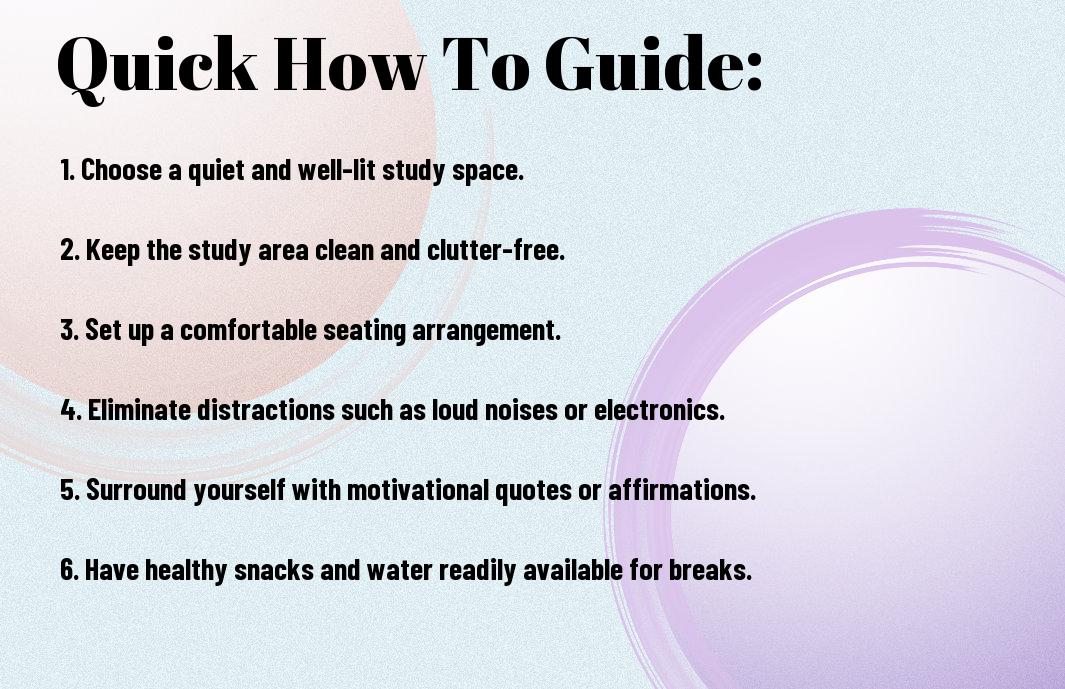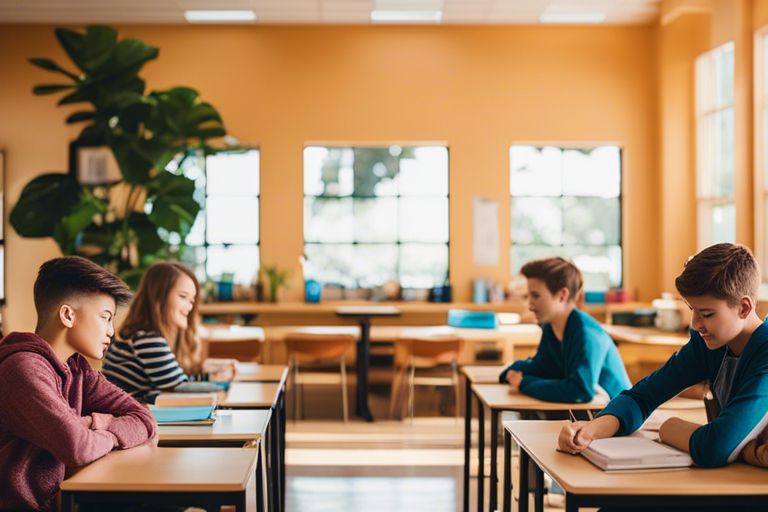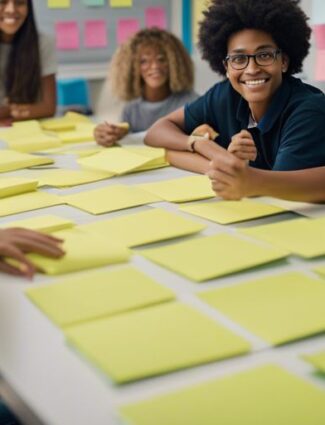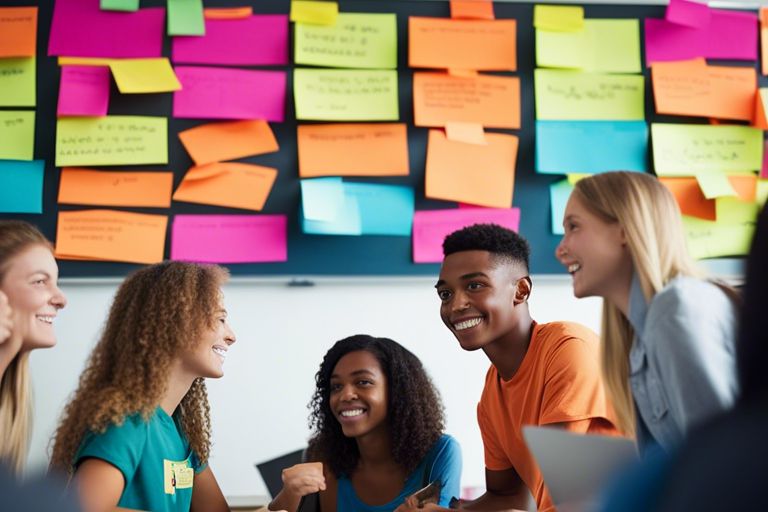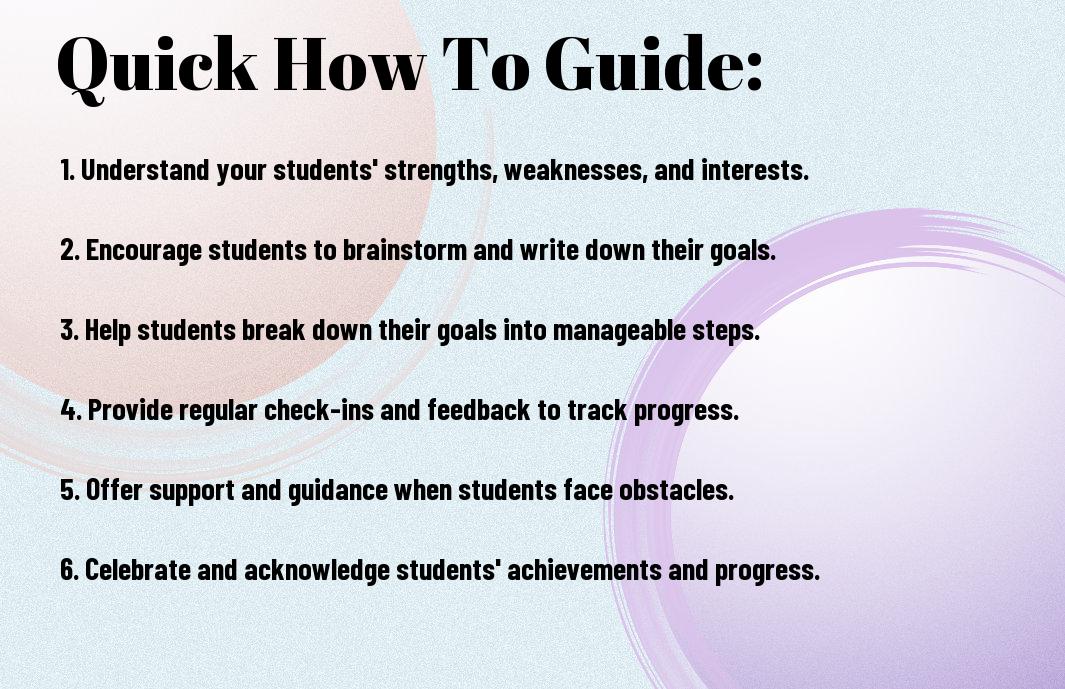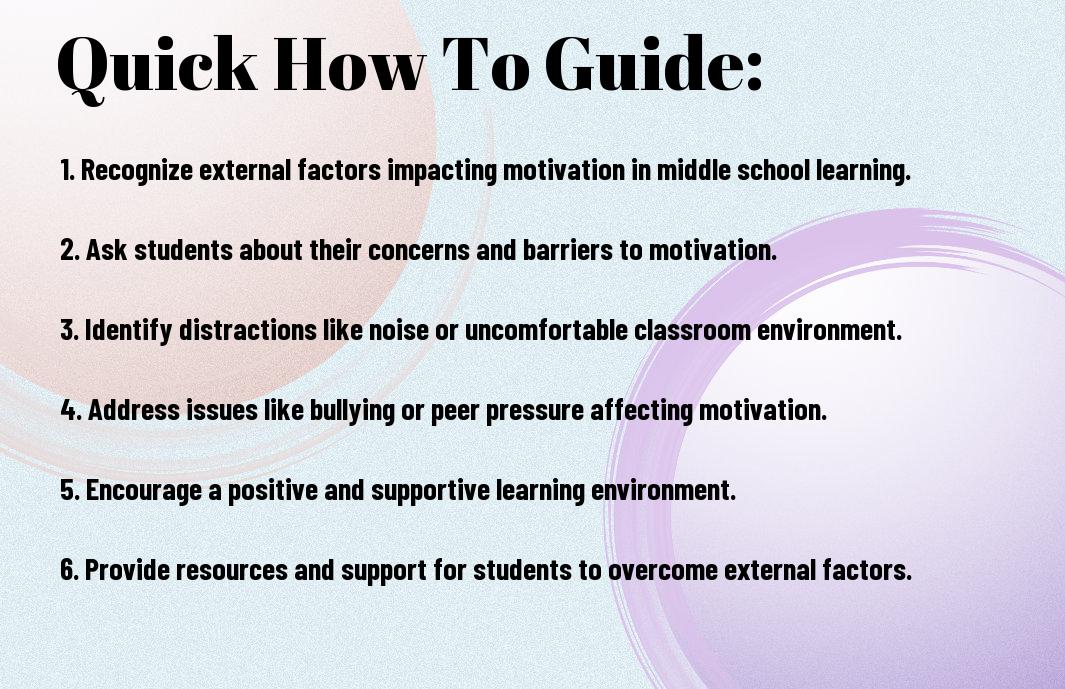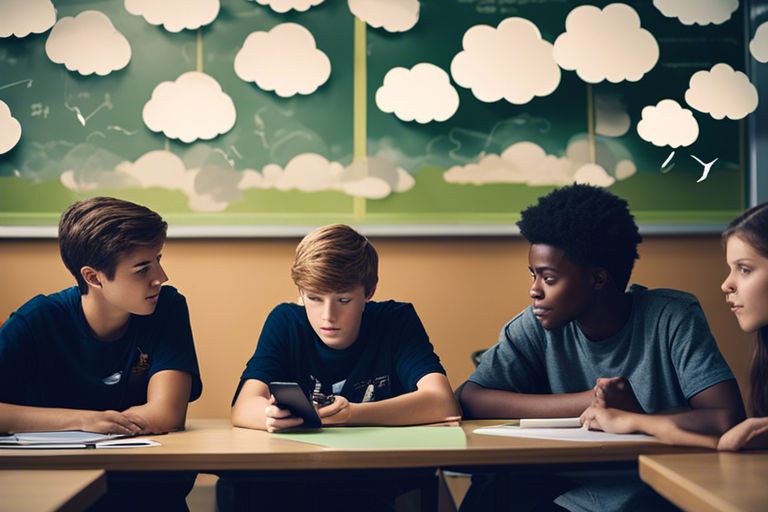Navigating negative peer influence and maintaining motivation can be a challenging task for middle school students, but as a teacher, you have the power to guide them through these difficult times. Peer pressure can be a strong force, leading students towards negative behaviors and attitudes. However, with the right strategies in place, you can help your students resist these negative influences and stay motivated to succeed academically and personally.
One important aspect of helping your students navigate negative peer influence is building a strong rapport with them. By fostering open communication and trust, you can create an environment where students feel comfortable coming to you for guidance and support. Additionally, teaching resilience and positive coping mechanisms can empower your students to overcome the challenges posed by negative peer influence. By implementing these strategies, you can equip your students with the tools they need to navigate the complexities of middle school and emerge as confident, motivated individuals.
Key Takeaways:
- Open Communication: Encourage open communication with students to create a safe space for addressing negative peer influence.
- Positive Reinforcement: Use positive reinforcement and praise to motivate students and reinforce positive behavior.
- Teach Resilience: Provide students with tools and strategies for building resilience to navigate negative peer influence.
- Model Positive Behaviors: Model positive behaviors and healthy coping mechanisms for students to emulate.
- Establish Support Systems: Establish support systems within the school and community to provide additional resources for students in need.
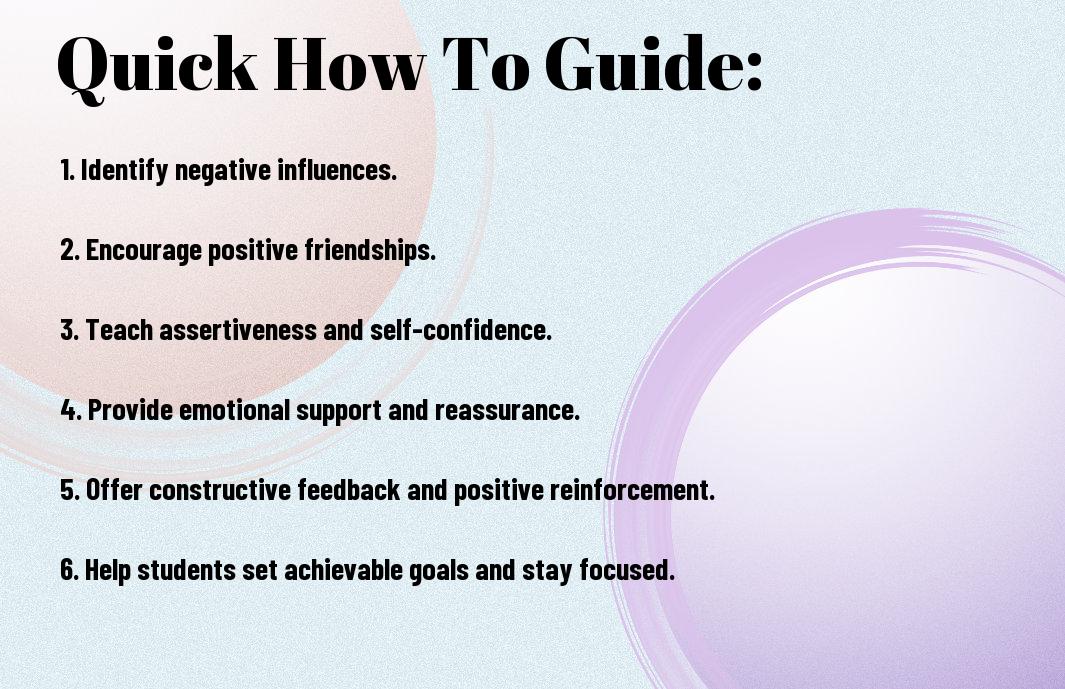
Recognizing Negative Peer Influence
Obviously, as a middle school teacher, you understand the impact that peer influence can have on students. It is important to be able to recognize when your students may be falling victim to negative peer pressure in order to intervene appropriately and help them navigate these challenging social dynamics. In this chapter, we will discuss how to identify signs of negative peer pressure and the impact it can have on student behavior.
Identifying Signs of Negative Peer Pressure
When it comes to identifying signs of negative peer pressure, it’s important to pay attention to changes in your students’ behaviors and attitudes. If you notice that a student who used to be outgoing and confident is suddenly withdrawn and anxious, it could be a sign that they are being negatively influenced by their peers. You may also observe changes in their academic performance, involvement in extracurricular activities, or their social circle. These are all potential indicators that a student is feeling the pressure of negative peer influence.
The Impact of Peer Influence on Student Behavior
Peer influence can have a significant impact on student behavior. When students are surrounded by negative peer pressure, they may engage in risky behaviors, such as substance abuse, bullying, or skipping school. It can also lead to a decline in academic performance and motivation. On the other hand, positive peer influence can have a beneficial impact on students, encouraging them to excel in their studies, develop healthy relationships, and participate in positive activities.
Strategies for Overcoming Negative Peer Influence
Now that you understand the potential impact of negative peer influence on your students, it’s important to equip them with strategies to overcome these challenges. One effective approach is to encourage positive peer relationships and empower your students to make independent choices.
Encouraging Positive Peer Relationships
One way to counteract negative peer influence is to encourage positive peer relationships. This can be achieved by fostering a classroom environment that promotes collaboration, empathy, and respect. Encourage your students to engage in group activities, collaborative projects, and peer mentoring programs. By fostering a supportive and inclusive community, you can help your students develop strong connections with their peers, making them less susceptible to negative influences. Additionally, promote open communication and conflict resolution skills to help your students navigate peer interactions effectively.
Empowering Students to Make Independent Choices
Another crucial strategy is to empower your students to make independent choices. Provide them with the knowledge and critical thinking skills to evaluate the impact of their decisions. Help them understand the consequences of their actions and the importance of setting boundaries. Encourage them to think for themselves and stand up for their values and beliefs. By empowering your students to make independent choices, you are equipping them with the confidence and resilience needed to resist negative peer influence and stay motivated in middle school.

Enhancing Student Motivation in the Classroom
Not all students are naturally motivated to succeed in the classroom, especially in the face of negative peer influence. As a teacher, it is essential to create an environment that fosters a sense of motivation and drive in your students. Here are some strategies to help enhance student motivation in the classroom and combat negative peer influence.
Creating a Supportive Learning Environment
Creating a supportive learning environment is crucial for enhancing student motivation. When students feel supported and valued, they are more likely to engage in the learning process and stay motivated. This can be achieved by fostering a sense of community in the classroom, providing positive reinforcement, and offering opportunities for students to voice their opinions and concerns. Additionally, creating a safe space for students to express themselves without fear of judgment can help combat the negative influence of their peers and keep them motivated to succeed.
Setting Achievable Goals and Rewards
Setting achievable goals and offering rewards can be powerful motivators for students. By breaking down larger tasks into smaller, manageable goals, you can help students feel a sense of accomplishment as they progress. Additionally, offering rewards for reaching these goals can provide positive reinforcement and incentivize students to stay on track. It’s important to set goals that are achievable and to tailor rewards to the interests and preferences of your students to maximize their effectiveness.
Tips for Engaging Parents and Caregivers
Keep parents and caregivers informed about the challenges their children may face from negative peer influence. Communication is key in helping to create a support system for your students. Emphasize the importance of open dialogue and active engagement to ensure a collaborative approach to addressing these issues. Here are a few strategies to help you engage parents and caregivers:
- Host regular parent-teacher meetings to discuss any concerns or challenges their child may be facing in relation to negative peer influence.
- Provide resources and support to parents and caregivers, such as information on how to recognize signs of negative peer influence and tips on how to effectively communicate with their child.
- Encourage parent involvement in school activities and events to help them feel more connected to their child’s educational experience.
Knowing that you have the support of the parents and caregivers can make a significant difference in helping your students navigate negative peer influence.
Fostering Effective Communication
When it comes to fostering effective communication with parents and caregivers, it’s important to establish a sense of trust and openness. Encourage parents to share any concerns they may have about their child’s social interactions, and be sure to provide a supportive and non-judgmental environment for these conversations. Additionally, communicate regularly with parents through newsletters, emails, or parent-teacher conferences to keep them informed about the strategies being implemented to address negative peer influence.
Collaborating on Strategies for Positive Development
Collaborating with parents and caregivers on strategies for positive development can significantly impact how students navigate negative peer influence. Encourage a partnership approach by sharing insights with parents about your observations and inviting their input on potential solutions. By working together, you can create a comprehensive support system that reinforces positive behaviors and offers a united front against negative peer influence.
Factors Contributing to Student Resilience
After conducting extensive research, it has become clear that there are several factors contributing to student resilience in the face of negative peer influence and other challenges. Here are some of the key determinants:
- Strong support system – Having a network of supportive friends and family members can significantly bolster a student’s ability to navigate negative peer influence and stay motivated in school.
- Positive mindset – Students who are able to maintain a hopeful and positive outlook are more likely to bounce back from setbacks and remain motivated despite peer pressure.
- Effective coping strategies – The ability to manage stress and cope with difficult situations is crucial for student resilience. Teaching students to develop healthy coping skills can help them stay motivated and focused on their goals.
Recognizing the importance of these factors in contributing to student resilience is crucial for educators and parents looking to support middle school students in overcoming negative peer influence.
Building Self-Esteem and Confidence
Building strong self-esteem and confidence is essential for helping students withstand negative peer influence. Encouraging students to develop a positive self-image and recognize their strengths can help them resist the pressure to conform to negative behaviors. Additionally, providing opportunities for students to succeed and receive recognition for their accomplishments can further boost their confidence and resilience.
Teaching Coping Skills and Problem-Solving
Teaching coping skills and problem-solving strategies equips students with the tools they need to navigate challenging social situations and stay motivated in the face of adversity. Encouraging students to identify their emotions, communicate effectively, and seek help when needed can empower them to handle peer influence in a healthy and productive manner. Problem-solving skills, such as critical thinking and decision-making, also play a crucial role in helping students overcome challenges and stay focused on their academic and personal goals.
How-to Implement School-Wide Programs
To address negative peer influence and keep students motivated in middle school, it’s important to implement school-wide programs that create a positive and supportive environment. These programs can help in fostering a sense of inclusivity, respect, and mentorship among students, which can in turn help them navigate through challenges and stay motivated.
Developing Peer Mentorship Initiatives
Peer mentorship initiatives play a crucial role in helping students navigate negative peer influence. By pairing older students with younger ones, you can create a support system that allows for positive role modeling and guidance. These programs can help students feel valued and supported, and provide them with positive influences to counteract negative peer pressure. Peer mentorship initiatives can help students develop social and emotional skills, build self-confidence, and provide them with a sense of belonging within the school community.
Promoting a Culture of Respect and Inclusivity
In order to combat negative peer influence and keep students motivated, it’s essential to promote a culture of respect and inclusivity within the school environment. This can be achieved through school-wide programs aimed at fostering empathy, understanding, and acceptance among students. By creating a welcoming and inclusive environment, you can help students feel valued and supported, which in turn can help them resist negative peer influence and stay motivated. Encouraging open and respectful communication, celebrating diversity, and addressing issues of bullying and discrimination can all contribute to creating a positive and inclusive school culture.
Monitoring Progress and Adapting Approaches
Your role as an educator in helping students navigate negative peer influence and stay motivated in middle school doesn’t end with implementing intervention strategies. It’s crucial to continuously monitor their progress and adapt your approaches as needed. Regularly assessing the effectiveness of your interventions and making data-driven decisions for continuous improvement are essential components of this process.
Assessing the Effectiveness of Intervention Strategies
Once you’ve implemented intervention strategies to help students deal with negative peer influence and stay motivated, it’s important to assess their effectiveness. This involves gathering data on the impact of your interventions, such as changes in student behavior, academic performance, and overall well-being. This assessment allows you to determine which strategies are working and which might need adjustment. It’s crucial to consider both quantitative data, such as academic progress and attendance records, and qualitative data, including student feedback and observations of their interactions with peers.
Making Data-Driven Decisions for Continuous Improvement
After assessing the effectiveness of your intervention strategies, it’s time to make data-driven decisions for continuous improvement. This involves analyzing the data collected to identify patterns and trends that can guide your next steps. By recognizing the most effective strategies and areas that need improvement, you can tailor your approaches to better meet the needs of your students. This iterative process of using data to inform your decisions ensures that you are constantly evolving and refining your methods to best support your students’ well-being and academic success.
Remember, staying vigilant and adaptable in your approach is the key to effectively helping your students navigate negative peer influence and stay motivated in their middle school years. By regularly monitoring progress, assessing the impact of your interventions, and making data-driven decisions for continuous improvement, you can create a supportive and empowering environment for your students to thrive.
Conclusively, Be Aware of Your Students’ Social Dynamics and Encourage Positive Relationships
By implementing the strategies discussed in this guide, you can help your students navigate negative peer influence and maintain their motivation throughout middle school. It’s important to be aware of the social dynamics within your classroom and to provide a supportive environment where students feel safe to express themselves and seek help if needed. Encouraging positive relationships and open communication can help students resist negative peer influence and stay focused on their academic and personal growth. By fostering a strong sense of community and acceptance, you can empower your students to make positive choices and stay motivated in the face of peer pressures.
FAQ
Q: What is negative peer influence in middle school?
A: Negative peer influence in middle school refers to the impact that classmates can have on each other’s attitudes and behaviors. This can include encouragement of bad habits, such as bullying, substance abuse, or skipping classes, and can have a detrimental effect on a student’s academic and personal development.
Q: How can teachers help students navigate negative peer influence?
A: Teachers can help students navigate negative peer influence by promoting open communication, fostering a positive and inclusive classroom environment, and providing guidance on how to handle peer pressure. By creating a safe space for students to express their concerns and offering resources for support, teachers can empower students to make confident decisions and resist negative influence.
Q: How can teachers keep students motivated in middle school?
A: Teachers can keep students motivated in middle school by recognizing and celebrating their achievements, offering engaging and diverse learning opportunities, and providing encouragement and support. By showing genuine interest in their students’ well-being, setting high but achievable expectations, and offering constructive feedback, teachers can help students stay motivated and committed to their academic success.


